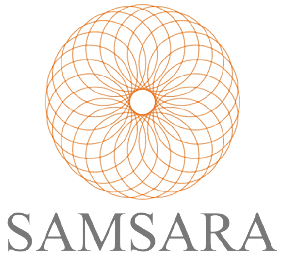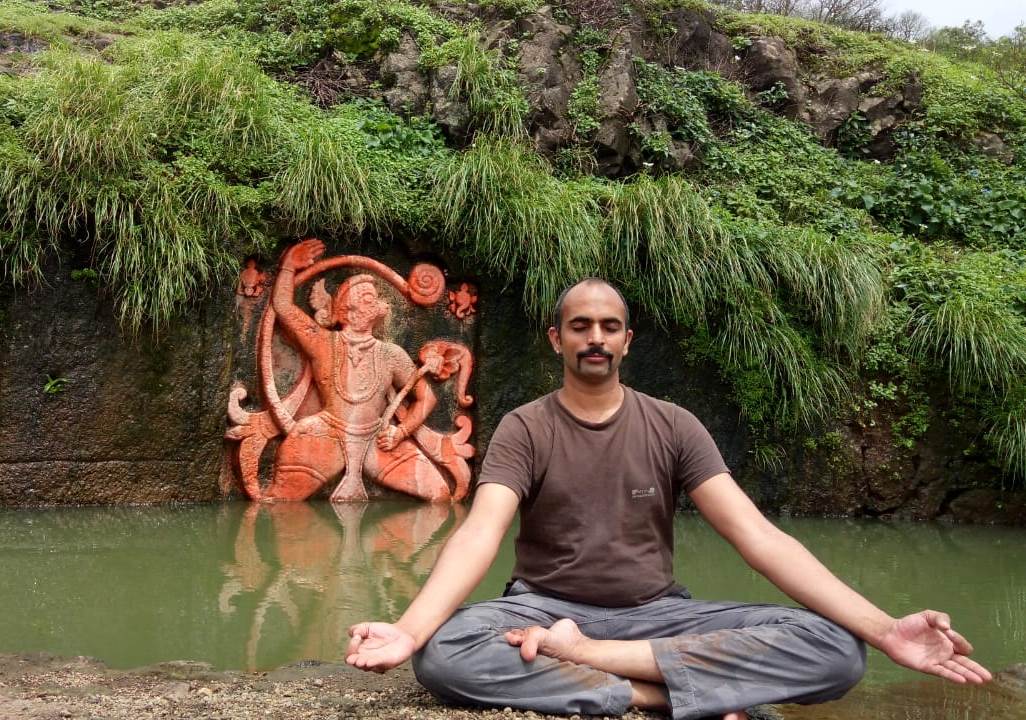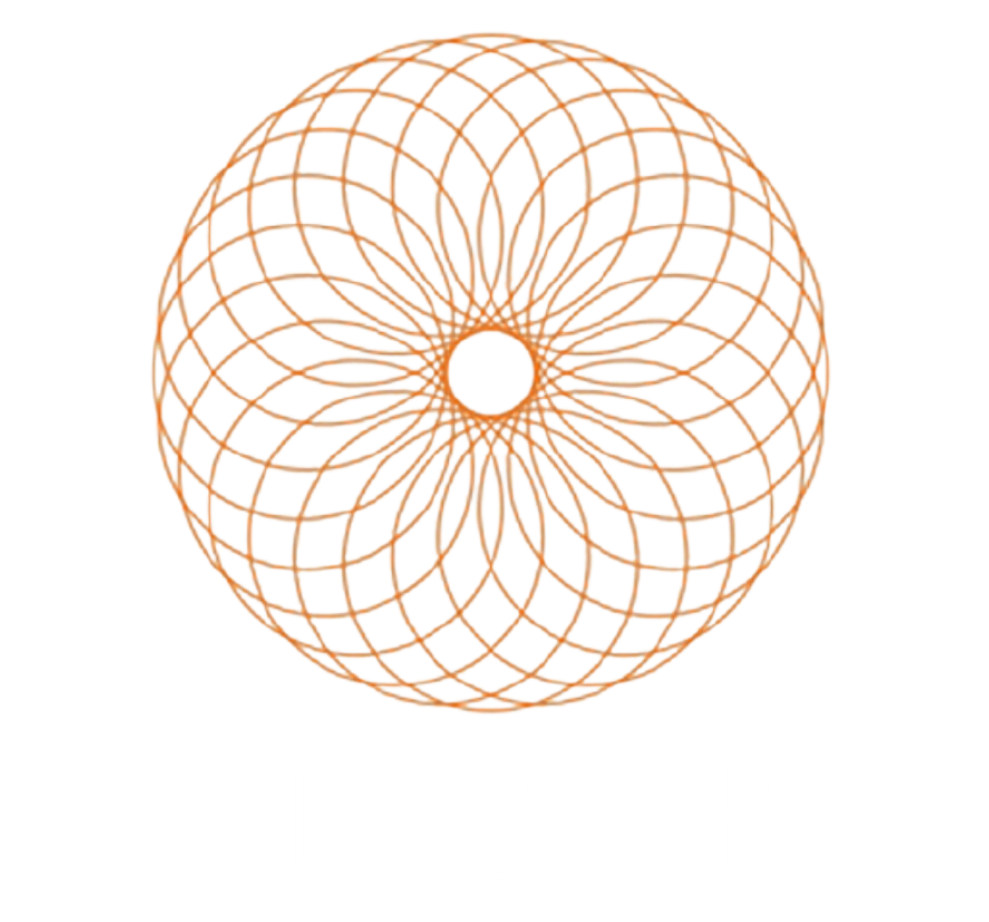- info.samsarayog@gmail.com
- +91 63601 98390
- No. 35/1, Apartment, Ranka Nest, KKS Rd, Okalipuram, Sevashrama, Bengaluru, Karnataka 560021
Transformational Wellness TTC
Transformational Wellness | Teacher Training Curriculum
At Samsara, we look beyond our clients’ needs around personal wellness. Have you felt the urge to pick up yoga or allied areas as a profession? If the answer to this question is a YES, then we’ve got you!
Experts at Samsara, holding decades of experience in the trade, offer the learnings of their profession in a concise curriculum to train you into becoming a teacher yourself.
The Teacher Training Curriculum (TTC) is a specialized program for individuals willing to impart professional training in the fields of transformation wellness.
Hatha Yoga
Hatha Yoga, essentially means physical techniques aimed at preserving and channelising vital force or energy.
The Samsara Hatha Yoga TTC will cover, inter alia, the following:
- Introduction to the origins of yoga, the history of the main styles of yoga.
- Four paths of yoga; Bhakti, Raja, Karma & Jaana yoga.
- Hatha yoga practice each day for 90 minutes.
- Sequencing of a Hatha yoga class.
- Adjustment & alignment techniques.
- Introduction to human anatomy & its relevance in yoga.
- Introduction to Yogic Philosophy covering patanjali yoga sutras.
- Art of teaching yoga.
- Close the day with an evening reflection practice using restorative yoga or an easy class on Hatha yoga.
Yoga Certification Syllabus
The Meditation section of the syllabus covers the following:
- Introduction of Meditation
- Om meditation
- Chakra sound meditation
- Chakras breathing meditation
- Nada Bhrama meditation
- Prayer meditation
- Mantra Meditation
- Meditation according to Patanjali Ji
- Dharna, Dhyan & Shamadhi
Pranayama is generally defined as breath control. Although this interpretation may seem correct in view of the practises involved, it does not convey the full meaning of the term. The word pranayama is comprised of two roots: ‘Prana’ plus ‘Ayama’. Prana means vital energy or life force.
- Introduction of pranayama
- Sutras of Pranayama
- Breath, Prana, Pranayama
- Normal breathing awareness
- Abdominal Breathing
- Thoracic Breathing
- Clavicular Breathing
- Deep yogic breathing
- Alternative nostril breathing
- Surya Bedi Pranayama
- Bhramari Pranayama
- Ujjayi Pranayama
- Bhastrika Pranayama
- Sheetli Pranayama
- Shitkari Pranayama
- Bhandas, mudra
- Meditative posture & seated posrure
Shatkarma is the Sanskrit term for one of the six yogic purification techniques (kriyas) as outlined in the “Hatha Yoga Pradipika.” The purpose of these cleansing techniques is to keep the body strong, clean and healthy. They are said to remove toxins and anything blocking the flow of prana in the body.Practicing shatkarmas internally purifies the body, which makes pranayama and meditation practice easier by preparing the body to perform these practices without distraction, discomfort or fatigue. This is a traditional yogic cleansing technique which is very effective and good to remove many illnesses and open the body blockages.
- Kapal Bharti
- Jal Neti
- Vaman
- Sutra Neti
- Tratak
Yoga is not an ancient myth buried in oblivion. It is the most valuable inheritance of the present. It is the essential need of today and the culture of tomorrow. Rejuvenate your mind and soul with the Indian traditional yoga style called “Hatha” which will lift your body stamina and strength. This is the most popular and beneficial yoga style.
- Joints Moments.
- Surya namaskara & Chandra Namaskara
- Yoga Mudrasana
- Matsyasana
- Gupta Padmasana
- BaddhaPadmasana
- ArdhaMatsyendrasana (half spinal twist)
- ParivrittiJanuSirsasana (spiralled head to knee pose)
- Poornabhujangasana (full cobra pose)
- Kurmasana (tortoise pose)
- Poornashalabhasana (full locust pose)
- PoornaDhanurasana (full bow pose)
- Lolasana
- Kukkutasana
- Garbhasana
- SaralBhujangasana
- Bhujangasana (cobra Pose)
- TiryakaBhujangasana
- Chakrasana (wheel pose)
- Hanumanasana (leg splitting pose)
- Poornamatsyendrasana (full spinal twist pose)
- Mayurasana (peacock pose)
- Padma mayurasana (Lotus or bound peacock pose)
- Gorakshasana (Yogi Gorakhnath’s pose)
- Sarpasana (snake pose)
- ArdhaShalabhasana
- Shalabhasana (locust pose)
- SaralDhanurasana (easy bow pose)
- ArdhaChandrasana (half moon pose)
- Setu Asana (bridge pose)
- Astavakrasana (eight-twists pose)
- Vrischikasana (scorpion pose)
- Inverted pose, balancing pose and core pose.
- Gomukhasana (cow’s face pose)
- Paschimottanasana (back stretching pose)
- GatyatmakPaschimottanasasna (dynamic back stretch pose)
- PadaPrasarPaschimottanasana (legs spread back stretch pose)
- JanuSirshasana (head to knee pose)
- Supta hasta Padaangushthasana (finger to toe stretch)
- Padahastasana (hand to foot pose)
- SirshaAngusthaYogasana (head to toe pose)
- Utthitajanusirshasana (standing head between knees pose)
Yoga is considered to be a perfect medium to know oneself and his inner power. Anatomy classes expose the internal working of the body, bones, inner systems, and respiration that effect asanas and the flow. The basic structure and function of the organs and system is very important for the practitioners so that their work as yoga teacher can be more enhanced. Knowing the different types of joints and their range of motions helps our students to be safe from injuries and also keep safe their students after they start teaching as a teacher.
- Flexibility Basics
- Anatomical terms
- Connective tissue and the muscular system
- Skeletal system
- Nervous system
- Digestive system
- Endocrine system
- Cardiovascular (circulatory) system
- Respiratory system and breathing
- Joints
- Introduction of Anatomy & physiology.
- Chakras
Attend a theoretical class and lecture about the history of yoga and importance of yoga in your life and its origin in India. You can ask their questions and deepen your knowledge about the existence of yoga.
- Meaning of Philosophy, history & types.
- What if yoga, definition, history, types.
- Description of Hatha Yoga
- Description of Karm yoga.
- Description of Bhakti Yoga
- Description of Ashtanga Yoga
- Three types of body
- Relations between asanas, pranayama & mediation
- Chakras
During the class, you will learn how to do a perfect posture. You will also learn Ayurveda therapy, injuries, and rest and integrate your daily practice, basic knowledge of foot reflex, warming up, alignment, and core posture.Teaching methodology is one the most important part of the course as our students will learn the following:
- How to conduct a class
- Classroom management
- How to get in and come out from the posture
- How to assist & help while teaching the class
- Which kind of words you should be using as a yoga teacher
- What makes you different than other teachers in terms of teaching
- What makes you different from other teachers in terms of teaching
- Which kind of asanas you should recommend with different health issue
- How to use belts, bolster, bricks and chair during the class adjustment.
Calisthenics
Calisthenics training is a holistic approach to developing an aesthetic body that is not only functionally strong, but also mobile and flexible.
The Samsara Calisthenics TTC will give you a clean progression system allowing you to advance effectively, alongside routine subjective adjustments, in addition to:
- Proper forms of all exercises.
- Growth from beginner to intermediate athlete.
- Basic knowledge of workout programming.
- Designing of Training Plans.
Parkour
Parkour, often heard with freestyle running, is an athletic training sport, using nothing but the human body, and of course, some free space.
The Samsara Parkour TTC comprises a bunch of skill sets, as undermentioned:
- Increase ground awareness through useful quadrupedal movement patterns.
- Prevent injuries by learning to safely land, roll in the real world.
- Connect the body & mind with the skill of rail balancing.
- Master the mechanics of jumping.
- Navigate low obstacles such as benches, walls, & rails.
- Vault low obstacles such as benches, walls, & rails.
- Redirect momentum with tic tac & wall running skills.
- Overcome high walls, gates, and fences with cat leaps & climb-ups.
- Build adaptability through complex movement sequences & improvisational drills
- Steps taken towards becoming invincible & fearless with falling skills that apply to almost any sport, discipline, or life’s unexpected mishaps in general.
- Apply these skills to complete mental challenges, complex movement combinations, and obstacle courses.
Course Structure & Details
Course Fee (In USD, Inclusive Of All Taxes)
- $3000
- for Twin-Sharing
- $3500
- for Single Occupancy
Inclusions: Training, accommodation and meals only.
Not included: Travel, insurance, any other liability etc. However, we do provide for airport transfers, available at INR 2400/- INR 3000/-.
Check-in: From 10.00 AM onwards on course start date.
Check-out: Before 11.00 AM on course end date.
Orientation meetings: Between 4 to 5 PM on the course start date.
Accommodation: We have air-conditioned rooms. We strive to always give you the accommodation agreed upon but special circumstances may compel us to make changes required. Please check our pictures and more detailed information about the accommodation.






Registration Procedure
Application: Complete the online application form. If you don’t hear back from us within 24 hours, please send us an email at info.samsarayog@gmail.com. Please always check your spam if you don’t see our response within 24 hours. You can also contact us at our WhatsApp number +91 6360198390 for status of your application.
Booking amount: Once accepted in the course, you will be asked to pay a non-refundable but transferable booking fee of $500/- or INR 41,000/- via PayPal/ Wise/ Googlepay / direct Bank Transfer. Your place on the course will be confirmed only upon receipt of the deposit amount. This fee will be adjusted in your total course fee.
Remaining balance: Upon arrival at Samsara Wellness, Goa by cash, debit or credit card, or PayPal.
Frequently Asked Questions
30 – 35 students
We do NOT have a rigid criteria for eligibility because of our belief in skill over qualification. Thus, if you are a fitness enthusiast, a yoga practitioner, an athlete, a gym freak, an acrobat professional, or any of the likes, you are automatically our best candidate for the training!
The ultimate motive of the trainers in our TTC programs is to transform you into a well-trained professional in whatever activity you choose, within the time frame you dedicate. It enables you to become self-sufficient to practice and teach, across ages and build a profession for yourself.
The TTC is available at Samsara Wellness in Arambol – Goa.
Indeed, our training will be marked completed with certifications from recognised reputed institutions. While the Hatha Yoga certification will be issued by Yoga Alliance USA, Calisthenics and Parkour will be under the aegis of Fit India!
First things first, you need to attend and participate in all classes, sessions and events we conduct as a part of the TTC. At the end of the TTC, you will undertake an exam, which is a super-smooth assessment for anyone who is present in the classes, both physically and mentally! We would also give you study material for any last minute recap you might need right before your exam
Our TTC program is duly offered under the aegis of the Fit India Initiative and Yoga Alliance USA.
Samsara Wellness strongly recommends consulting your doctor before joining the program with respect to any personal medical conditions.
Once you have booked your place in the course, we will give you access to an online module which covers the non-contact hours of the training. This online module is a combination of pre-recorded classes and the teacher training manual. This module covers a big portion of yoga anatomy as well as a few classes on pranayama, meditation and philosophy.
We recommend you to complete the anatomy section before the commencement of the in-person training at Goa with us. Please know that our anatomy section is taught mainly via the online module although we will still have many practical and theory classes during the in-person training.






